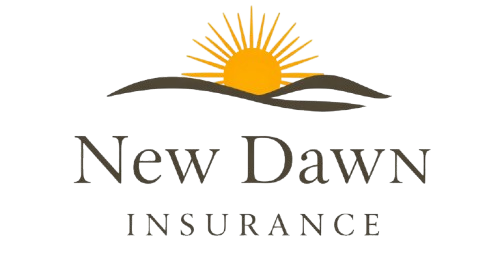Types Of Insurance Coverage We Offer
What is Health Insurance?
Health insurance is a contract that provides financial coverage for medical expenses. It helps protect individuals and families from high healthcare costs, offering peace of mind and access to necessary treatments.Why is Health Insurance Important?
Health insurance ensures you can get timely medical care without the burden of overwhelming costs. It also encourages preventive care, regular checkups, and early treatment of illnesses, improving overall well-being.Types of Health Insurance Plans
- HMO (Health Maintenance Organization)
- PPO (Preferred Provider Organization)
- EPO (Exclusive Provider Organization)
- POS (Point of Service)
- High-Deductible Health Plans (HDHPs)
- Medicare and Medicaid
How Health Insurance Works
When you enroll in a health insurance plan, you pay a monthly premium. In return, your insurer helps cover your medical costs after deductibles, co-pays, or co-insurance have been met. Most plans include a network of doctors and hospitals you can access at discounted rates.Common Terms You Should Know
- Premium: The amount you pay every month for coverage.
- Deductible: The amount you pay out-of-pocket before coverage starts.
- Copayment: A fixed fee for specific services like doctor visits.
- Coinsurance: Your share of the costs after the deductible is met.
- Open enrollment periods: They do not apply to private insurance; you can enroll at any time during the year.
Choosing the Right Health Plan
When selecting a health plan, consider your medical needs, budget, preferred doctors, and whether you require coverage for prescriptions, mental health services, or specialists. Compare plan benefits and network providers before deciding.Enrollment Periods
Open enrollment typically happens once a year. During this time, you can sign up for a plan, change plans, or add family members. Special enrollment periods are available if you experience major life changes such as marriage, birth, or job loss.Health Insurance for Families and Individuals
Whether you’re single, married, or have children, there are flexible plans tailored to your lifestyle and healthcare needs. Family plans offer comprehensive benefits while reducing the cost per person.Health Insurance and Preventive Care
Most insurance plans cover preventive services like vaccines, screenings, and wellness visits at no additional cost. This promotes early detection and helps reduce long-term health issues.How to Get Help
Have questions or need help choosing a plan? Speak with a licensed agent or use online tools to compare options and find the best fit for your situation.Term Life Insurance
Term life insurance lasts for a specified number of years and then ends. You choose the term when you take out the policy, with common terms being 10, 20, or 30 years. The best-term life insurance policies balance affordability with long-term financial strength.
Types of Term Life Insurance:- Return Of Premium: This allows to refund all or part of your paid premiums if you outlive the policy’s term.
- Convertible Term Life Insurance: This allows policyholders to convert a term policy to permanent insurance.
- Renewable Term Life Insurance: This is a yearly renewable term life policy that provides a quote for the year the policy is purchased. Premiums increase annually and it is usually the least expensive term insurance initially.
Term life insurance is attractive to young people with children because parents can obtain large amounts of coverage at reasonably low costs. Upon the death of a parent, a significant benefit can replace lost income.
These policies are also well-suited for people who temporarily need specific amounts of life insurance. For example, the policyholder may calculate that by the time the policy expires, their survivors will no longer need extra financial protection or will have accumulated enough liquid assets to self-insure.
Term life insurance is for a predetermined period, typically between 10 and 30 years. Term policies may be renewed after they end, with premiums recalculated based on the holder’s age, life expectancy, and health. By contrast, whole life insurance covers the entire life of the holder. Unlike a term life policy, whole life insurance includes a savings component, where the cash value of the contract accumulates for the holder. The holder can withdraw or borrow against the savings portion of their policy, where it can serve as a source of equity.
Return of premium (ROP)
Return of premium (ROP)life insurance is a type of term life insurance that refunds all or part of your paid premiums if you outlive the policy’s term. It’s essentially a term life policy with a built-in savings component. This means you get coverage during the policy term, and if you’re still alive when the term ends, the insurer returns your premiums.
Whole Life Insurance
Whole life insurance, also known as traditional life insurance, provides permanent death benefit coverage for the life of the insured. In addition to paying a death benefit, whole life insurance also contains a savings component in which cash value may accumulate. Interest accrues at a fixed rate and on a tax-deferred basis.
Whole life insurance policies are one type of permanent life insurance. Whole life insurance is the original life insurance policy, but it does not equal permanent life insurance as there are many types of permanent life insurance.
Final Expense
- End-of-life expenses: This includes things like funeral arrangements (embalming, casket, flowers, services), burial costs (cremation, burial plot, headstone), and other related expenses.
- Medical bills: Outstanding medical bills, including hospice care, medications, and hospital stays, can be covered by the policy’s payout.
- Other expenses: The death benefit can also be used to cover things like legal fees, outstanding debts, and even everyday bills.
- Financial support for loved ones: The funds can help alleviate the financial burden on loved ones during a difficult time.

